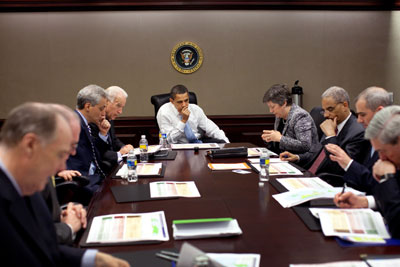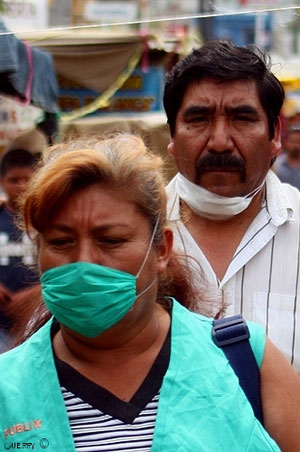Discourses of a pandemic
In this case study Donald Matheson explores the coverage of the ‘swine flu pandemic’ of 2009 and how the construction of news stories was influenced by both perceptions of the predicted consequences of a serious flu-like pandemic and the conventions of media reporting of medical issues. However, as Matheson points out, it was also framed by institutional issues within the scientific and medical communities: “This was a discursive as much as a medical event.”
(This case study is also useful in working on Chapter 12 News and its futures)
Donald Matheson is a senior lecturer in media and communication at the University of Canterbury, New Zealand. He has written two books, Media Discourses (Open University Press 2005) and Digital War Reporting (with Prof Stuart Allan, Polity Press 2009) and co-edits Ethical Space: The International Journal of Communication Ethics. Before moving to New Zealand, he taught at Strathclyde University and Cardiff University, and before that worked for a short time as an education reporter in Wellington, New Zealand.
The power of discourse to shape how people think was readily apparent in March 2009 when swine flu broke out in Mexico. In terms of death and illness, it was a relatively mild flu, certainly after the initial outbreak. By early July the World Health Organisation (WHO) had recorded 1150 deaths worldwide, out of an estimated 180,000 cases of infection, a low number particularly given the quarter to half million who die from other strains of flu in a typical year.
But in terms of people’s understanding, swine flu, or H1N1, had an enormous impact. Governments screened passengers at airports, closed schools, banned public gatherings, launched huge public education campaigns, with the Egyptian government even slaughtering its pig population. Through the enormous amount of official attention, media coverage and everyday discussion, it was perceived, interpreted, imagined by people in the medical world, in public life and in people’s personal lives as a grave risk to health. This was a discursive as much as a medical event.

President Obama being briefed on swine flu, White House Photo by Pete Souza (public domain)
Epidemiologists, for example, saw what they had been fearing for many years. The most recent strain of bird flu led to various outbreaks in south-east Asia between 2004 and 2008 that killed more than two thirds of those reported as infected, although the numbers of deaths were very low. ‘The world is teetering on the edge of a pandemic that could kill a large fraction of the human population,’ one virologist, Robert Webster, titled an article in the American Scientist online (Robert G. Webster and Elizabeth Jane Walker 2003). He suggested that only the actions of vigilant scientists in convincing Hong Kong authorities to slaughter over a million domestic fowl in 1997 saved the human world from the possibility of billions of deaths. The next deadly strain ‘may arrive any day now,’ he wrote, pointing particularly to pig flu because of genetic similarities to humans. Other scientists have pointed to the risk of swift transmission of disease in an age of high global mobility, while others were alert for similarities to the 1918 Spanish flu, which killed more than 50 million people. Global health organisations, particularly the WHO, now hold themselves poised to coordinate analysis and recommendations on new flu strains. This is not simply science, then, but the result of talk amongst scientists and public health officials, with careers, funding decisions and institutional logics focused on seeing a particular object. When and if? the ‘big one’ appears, we will be ready, which is perhaps some comfort. But it is also worth remembering that not all major health issues get this focus. About 9.5 million children under five die every year around the world, up to half of them because of malnutrition, unsafe drinking water and poor sanitation (Unicef). Tobacco-related conditions cause about 5 million deaths a year (WHO). Why does the flu worry the world so much more?
Why the panic?
To answer this question we need to recognise first that science cannot be divorced from social forces. Analysis of the political economy of the flu might note that the pharmaceutical companies have much to gain from public concern in the west. (See this news article.) Analysis of discourse – talk and writing through which people make sense of the world and interact with each other – is particularly useful in tying down the links of the health issue to the cultural backdrop.
In the west, the risk of flu looms large partly because we are used to medical science solving our problems so that we may live without fear of dying. Ulrich Beck (Risk Society: Towards a New Modernity, London: Sage 1992) describes a clash in contemporary western society between our collective ability to manage the things that threaten us, through technologies and institutions such as the health and welfare systems, and the emergence of hazards, such as global warming or global financial collapse, that those technologies and institutions themselves partly cause. A flu that goes global is, then, a threat to western society’s self-understanding.
The news story on the next page, from the British Sunday Times, expresses just this sense of crisis in making sense of our world.
Pandemic fear as killer flu spreads
By Matthew Campbell, Sunday Times, 26 April 2009, p.1
A deadly strain of flu that combines elements of swine, avian and human viruses could spread around the world after emerging simultaneously in Mexico and the United States, experts warned yesterday.
Margaret Chan, director-general of the World Health Organisation, said the disease had "pandemic potential". Last night she was meeting an emergency committee of experts to consider how to respond. She described it as "a serious situation".
Up to 68 people have died from pneumonia caused by a flu-like illness in Mexico, where 1,004 suspected cases have been reported. Tests have so far confirmed that 20 of the deaths were caused by a hitherto unknown swine flu.
Mexican soldiers distributed surgical masks and the authorities issued warnings to avoid shaking hands or kissing.
Mexico's virus is identical in some cases to a strain that has appeared in Texas and California, where eight people have been infected but recovered.
American scientists are trying to determine whether scores of students who fell ill at a school in New York with flu-like symptoms on Thursday and Friday may also have been infected.
Experts said the virus, against which ordinary vaccines offer little protection, posed the biggest threat of an international pandemic since bird flu began spreading in 2003. That has killed 256 people in 15 countries.
[story continues]
As with many news stories on the topic, the keyword ‘pandemic’ is prominent, describing a disease that cannot be controlled by national borders but instead thrives in our globalised hi-tech world (airlines figured large in other news coverage for the same reason). The flu is, in the verbal details of the story, an active thing – it ‘combines’, ‘could spread’ and is ‘emerging’ in the first sentence alone – rather than being something controlled or acted upon as our society has taught us to expect. The ‘experts’, for their part, are in emergency talks and issuing warnings. As news often does, the text articulates the disruption of something (see discussion of News Values in Chapter 12, MSB5). This is such a big news story because something fundamental is being disrupted, something in our collective ‘ontology’ or sense of being in the world. As the talk in the media increased, the risk and the fear became still more self-evident, each text reinforcing the other.

‘Masked for travel’, photo by Eneas on Flickr (cc)
Discourse analysis in this way interprets details of language use as typical parts of much larger, often unstated but presupposed, systems of meaning, or discourses. Media texts are often critiqued for the way they draw upon dominant discourses, that is, upon major sets of ideas which have the status of being commonsensical, widely shared and normal ways of thinking, and which organise what is actually said without themselves ever needing to be said. They are what ‘we all know’, or rather, they have the power to stand as what we all need to know to take part in the dominant discourse. These forms of talk have, then, ideological power (see MSB5 Chapter 6 Ideologies and discourses.).

‘On the streets in Mexico’ photo by Guerry, Flickr (cc)
Discourses gain that kind of power partly from their links to other discourses (one theorist, Ernesto Laclau (1985), thinks of a discourse’s power in terms of its ability to fix meaning and pull other ways of thinking in around it). In the west, the discourse of swine flu has resonated with deep-seated understandings of non-western people as dirty, chaotic or threatening (see MSB5 Chapter 5 Globalisation). The fear in the Sunday Times article’s headline is of the ‘spread’ of the flu from the ‘other’ to ‘us’ – it is safely comprehensible in Mexico, but threatens that sense of security when also established in California or New York.
In China, in contrast, swine flu was immediately seen as a threat to faith in government, being implicitly – and occasionally explicitly – linked to the state’s suppression of news of the 2003 SARS outbreak in Guangdong, which arguably hampered control of that disease. The state Xinhua news agency quickly carried news stories about what the state was doing to prevent swine flu spreading to China: ‘The possibility of the H1N1 influenza epidemic (swine flu) spreading to China is increasing and the prevention and control work is “quite arduous,” said China's Health Minister Chen Zhu here Friday’ (Xinhua English wire, 2 May 2009). In some countries, where pigs are discursively produced as unclean, living on rubbish and not suitable for eating, culls of (uninfected) pigs happened early in the outbreak.
News discourse is often a site where these multiple, sometimes contradictory, meanings come together. Sometimes dominant discourses become challenged, as in the wave of sceptical news and commentary that arrived soon after the initial stories. “Worse than the physical discomfort was the fleeting sense of being a pariah, the panic in people's voices when they called . . . “ wrote a (recuperating) columnist in the Daily Telegraph (Jojo Moyes, 24 July 2009).